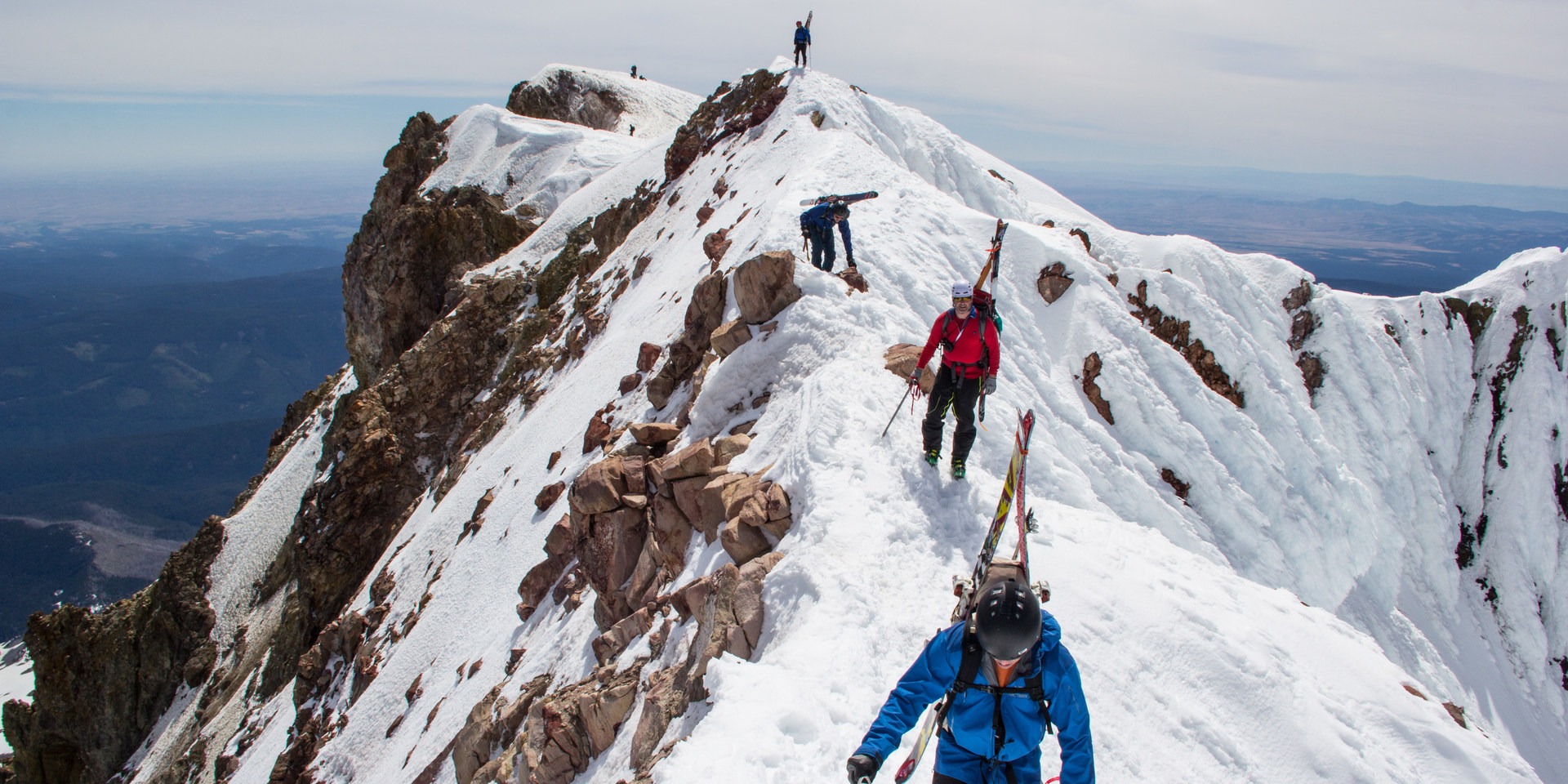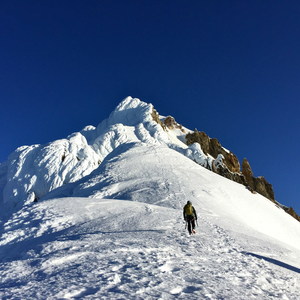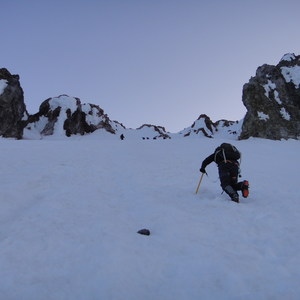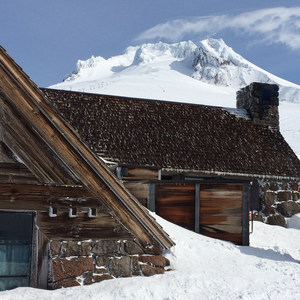As the name suggests, this adventure focuses on the ski descent, rather than the climb, of West Crater Rim on Mount Hood (11,249'). But before one can ski the crater, they'll first need to ascend Oregon's tallest peak, so a few words first about the uphill.
Typically the most time-efficient route up the mountain, Hood’s heavily traveled South Side Route via the Old Chute is a good option when West Crater Rim is the ski objective. Much of the climb can be undertaken using skins, expediting the ascent. The South Side Old Chute route leaves from Timberline Lodge and follows the east side of the ski area up to Triangle Moraine. It then continues up the east side of Crater Rock and gains the Hogsback ridge before ascending a steeper pitch up the Old Chute. For more detailed information on the South Side Old Chute route, refer to the climbing guide here.
For accessing West Crater Rim, the Old Chute pops the ski-mountaineer out in an ideal summit ridge location. With little exposure, one can traverse southwest along the ridge to a choice drop-in spot. If the true summit of Mount Hood is part of your objective, you’ll have to navigate some exposure along the narrow rim-ridge east from the top of the Old Chute to the summit plateau, and then back again. Use of a rope may be preferred if navigating this section by some parties.
If you’re here solely for the ski down and aren't concerned with standing on the true summit, you can top out on the Old Chute and begin traversing west following the summit ridge (also the rim of West Crater Rim). The summit ridge bends southwest, and steps down slightly to a small ledge, dropping about 100 feet in elevation. You will know you’ve reached the drop-in when further travel on the ridge would become difficult and extremely exposed. At this point you’ll be standing with the top of the Leuthold Couloir on one side and your descent line down the steep slopes of West Crater Rim on the other.
Time your ski descent for late morning to allow time for the the sun to soften the firm and often icy surface snow. You'll want to wait for the smooth velvet corn snow to form, what late spring skiing on Cascade volcanoes is all about. During May and June, this typically happens around 11 a.m.
Once the snow is ready, kick off those crampons and get ready to ride. Upper West Crater Rim has an initially steep pitch that drops between a large gendarme formation to the north and a cliff band to the south for about 500 feet. Ski the steep pitch down to where the angle lessens, but remain above the bowl of West Crater that funnels further down towards Crater Rock.
Below this initial steep pitch, there is a slight bench running in a southwest direction, below the cliff band, that drops in elevation gradually. Stay high on this bench skiing to a small pad above the rocky spires rising from Castle Crags.
The next portion of the descent drops off the end of the bench and into lower West Crater. It is both slightly steeper and longer than the slope running off the upper rim. Ski this memorable section down until you are below Crater Rock, avoiding potential rockfall hazard from Crater Rock’s crumbly south face. From here the skiing becomes intermediate but still enjoyable down Zig Zag Glacier. After linking some turns, make the traverse back over to Timberline Ski Area, and aim for the top of Magic Mile lift so as not to miss access to the parking area and your car.
A word of caution about skiing below Crater Rock: If you are unfamiliar with the South Side Route and climbing Mount Hood, you should study the descent and the traverse necessary to make it back over to Timberline Ski Area from below Crater Rock. Take a compass, map, altimeter, and have GPS coordinates pre-programmed in the event weather or low visibility conditions limit your ability to see the route. In low visibility, if you continue skiing the fall line directly downhill from Crater Rock, you will be travelling in a southwest direction (rather than south) and into a dangerous area with the cliffs of Mississippi Head and Zig Zag Canyon below. By heading south (rather than southwest) you will be traversing across the slope towards the ski area. Trust your compass and go south. In low visibility you should be traversing in a southerly direction by 8,500 feet in elevation.
In addition to bringing skis, poles, skins and essential backcountry ski equipment, you’ll be glad to have a pair of boot crampons and an ice ax for the upper part of the climb. Ski crampons can also be handy.









Comments
Sign In and share them.